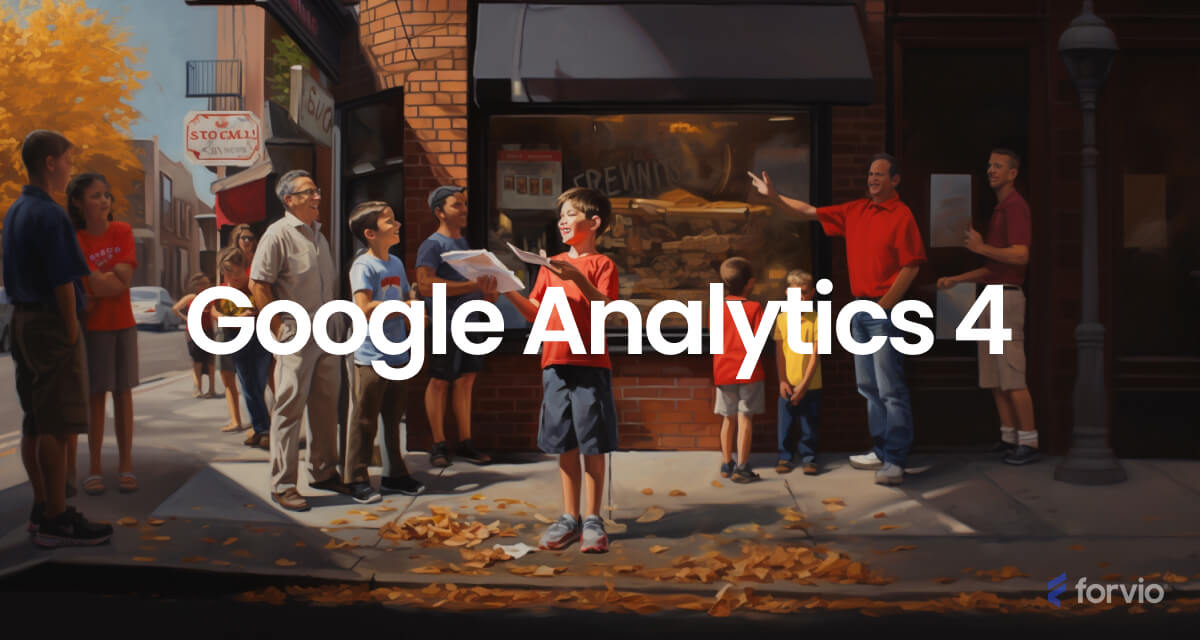Introduction
GA4 is not going to offer marketers data sets they’ve relied upon for years. MMM will pick up the slack — and much more!
Google is phasing out third-party cookies from Chrome by 2024. As a result, the tech giant’s Universal Analytics tool is getting not just a makeover, but a complete rebrand.
Google Analytics 4 (GA4) will take over data collection starting July 1, 2023. Unfortunately, it will be collecting decidedly less data.
All non-last-click rules-based attribution models, including first-click, linear, positioned based and time decay, will be deprecated. The fact that GA4’s only attribution model remaining from Universal Analytics will be “last-click attribution” (or “last-touch attribution”) is problematic for many.
The Story

Imagine you run a pizza parlor. To attract more customers during what is typically a slow period, you decide to create a coupon campaign that awards an entire free pie to anyone who orders one between 11 a.m. and 2 p.m. on Tuesdays.
That’s a great offer! You’re sure it will be a success because it was your genius idea all along.
You hire a graphic designer to generate the coupon artwork, you invest in a highly rated printer who prints the coupon on quality paper.
Finally, you hire Joey.

Joey’s the kid who stands in front of your pizza parlor and hands out the coupons. When you sell a whole bunch of pizza pies during Tuesday’s new lunch rush, and you only judge the success of your marketing campaign on Joey’s efforts, you’re forgetting what are probably some more important metrics.
The heavy paper your printer used for the coupons gave the prospective customers something solid they could hold onto and remember; the artist who designed the coupon came up with an eye-appealing color palette that aligned with your parlor’s branding and was equally as memorable.
You also made the aggressive executive decision to give away a whole free pie because you believe in your product enough to know you’ll get new customers ordering one or more at full price during Saturday’s dinner shift.
And Joey? Joey was great! He smiled, was friendly to passersby and stood outside for a long time in the elements.
But does Joey deserve all the credit for your uptick in Tuesday lunch sales, or the new people you see popping in for a pizza other days of the week? He deserves a pat on the back and a couple of free slices, but definitely not all the credit for the success of your campaign.
If you exclusively use GA4 data for measurement, though, you’d end up making Joey president of your pizza parlor.
Do we need GA4 then?
GA has been a terrific tool for digital marketers for a long time. But an updated approach that paints a much more detailed picture of the customer’s experience interacting with your brand is needed — more now than ever.
Marketing Mix Modeling (MMM) accounts for all the attribution models GA4 won’t include, plus last-touch attribution and considerably more data. Will GA4 tell you that sales were down due to weather, a change in the economy or a social flashpoint like a pandemic? No. No, it will not.
MMM also removes biases that may be generated by leveraging Google products exclusively. For example, does Google Analytics disclose all the traffic your business’ site gets from ads posted to Google’s archrival competitor, Facebook? No. No, it does not. The same goes for the Facebook-owned Instagram, too, don’t forget. That’s a lot of social media-based clicks you’re missing in your ad spend ROI report.
GA4 won’t tell you how many people were referred to your site from a podcast on Spotify either, or even how well your magazine ad performed. And it’s anyone’s guess what kind of impact the emerging virtual reality space will have on marketing. Will Google Analytics have a deep footprint in that space? We know your MMM provider will. They tend to cover that sort of thing, and a multitude of other external data sources we still haven’t mentioned here.
And for all the changes Google’s making to its analytics tools, there is still uncertainty as to whether or not it is compliant with the European Union’s General Data Protection Regulation (GDPR). Some countries, like Italy, Austria and France, have outright banned Google Analytics, while countries like Sweden and Belgium have levied fines against Google for GDPR violations.
Conclusion
Marketers got away with mining personal data of consumers for many years, but times have changed — and MMM has always changed with the times. It’s inherently versatile and agile, adapting to immediate marketplace disruptions and long lasting measurement evolutions, of which there have been many since the tool was first adopted, decades before the digital age.
Forvio is the future, now. Our game-changing Marketing Mix Modeling platform analyzes performance across multiple channels, with easy-to-examine, granular information generating crucial insights, and dynamic forecasting that will put you ahead of the competition. Through constant updates from centralized data sets, Forvio’s MMM platform optimizes marketing strategies, and maximizes their impact.
Perhaps best of all, you’ll get all this useful knowledge and can still keep Joey on the payroll, paying him in pizza slices.

